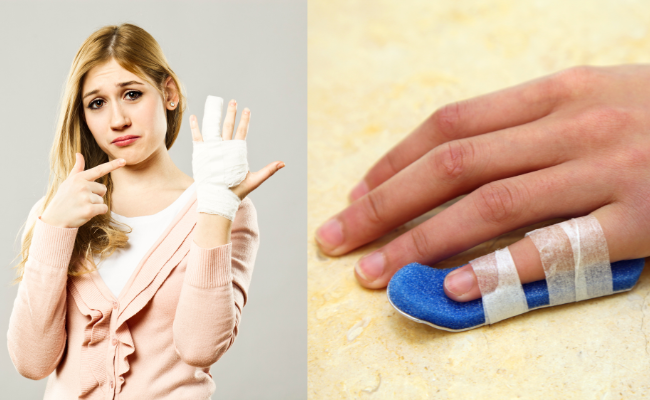How to Treat Broken Finger?
- December 13, 2023
- No Comments

What is a Broken Finger?
A broken finger, or finger fracture, is a common injury resulting from accidents, sports injuries, or direct trauma. It causes pain, swelling, and limited movement due to a break in one or more finger bones. Prompt and proper treatment is essential to facilitate healing and prevent long-term complications.
The injury occurs when the small bones called phalanges, constituting the finger structure, experience a fracture. This can happen from accidents or situations where external force or weakened bone structure is involved. Seeking immediate medical attention, including an X-ray, is crucial to accurately assess the fracture's nature. Depending on the type and severity, healthcare providers may recommend a splint for stability or suggest surgical intervention to repair the break.
Why treating a broken finger important?
Treating a broken finger promptly is crucial for several reasons. First and foremost, immediate care can help alleviate pain and reduce swelling, providing comfort to the affected individual. Additionally, proper treatment can promote optimal healing, preventing complications such as deformities, stiffness, or chronic pain. Ignoring a broken finger or attempting to self-treat without professional guidance can lead to improper healing and long-term issues.
How to Treat a Broken Finger?
- Assessment and Diagnosis: The first step in treating a broken finger is to assess the severity of the injury. Look for signs such as pain, swelling, bruising, deformity, or an inability to move the finger. If there is any doubt about the severity of the injury, seek medical attention for a proper diagnosis, which may involve X-rays to determine the extent of the fracture.
- Immobilization: Immobilizing the broken finger is crucial to prevent further injury and promote healing. This can be achieved by splinting the finger using a padded splint or by buddy taping (taping the injured finger to an adjacent healthy finger for support). Immobilization helps reduce pain and prevents unnecessary movement that could hinder the healing process.
- Elevation: Elevating the injured hand can help minimize swelling. Keeping the hand elevated above heart level can reduce blood flow to the affected area, preventing excessive swelling and promoting a faster recovery.
- Icing: Applying ice to the injured finger in the first 48 hours helps reduce swelling and alleviate pain. Use an ice pack or wrap ice in a cloth and apply it to the affected area for 15-20 minutes at a time, allowing for breaks in between to prevent frostbite.
- Pain Management: Over-the-counter pain medications, such as acetaminophen or ibuprofen, can be used to manage pain and inflammation. However, it's important to follow medical advice regarding the appropriate dosage and duration.
Treatment Solutions: Professional Medical Interventions
- Medical Evaluation: Seek prompt medical attention for a comprehensive evaluation of the broken finger. A healthcare professional can assess the severity of the fracture, identify any potential complications, and recommend an appropriate treatment plan.
- Casting or Splinting: In more severe cases, a healthcare provider may recommend casting or splinting the broken finger to ensure proper immobilization and support during the healing process. This is common for fractures that involve multiple bones or significant displacement.
- Reduction: If the broken bones are misaligned, a procedure called reduction may be performed to realign them. This can be done through manual manipulation or, in some cases, with the assistance of traction or external fixation devices.
- Physical Therapy: Following the initial healing period, physical therapy may be recommended to restore strength, flexibility, and function to the affected finger. Therapeutic exercises can help prevent stiffness and improve overall hand function.
Benefit Points: Advantages of Proper Treatment
- Faster Healing: Prompt and appropriate treatment of a broken finger promotes faster healing, allowing individuals to regain normal function and resume their daily activities sooner.
- Reduced Complications: Proper treatment helps minimize the risk of complications such as deformities, stiffness, or chronic pain associated with improperly healed fractures.
- Pain Relief: Immobilization, elevation, and pain management strategies contribute to significant pain relief during the recovery period.
- Prevention of Long-Term Issues: Professional medical interventions, including casting, reduction, and physical therapy, can prevent long-term issues and ensure the optimal recovery of the injured finger.
- Improved Functionality: Following a comprehensive treatment plan enhances the overall functionality of the finger, restoring range of motion and strength.
Comments (0)